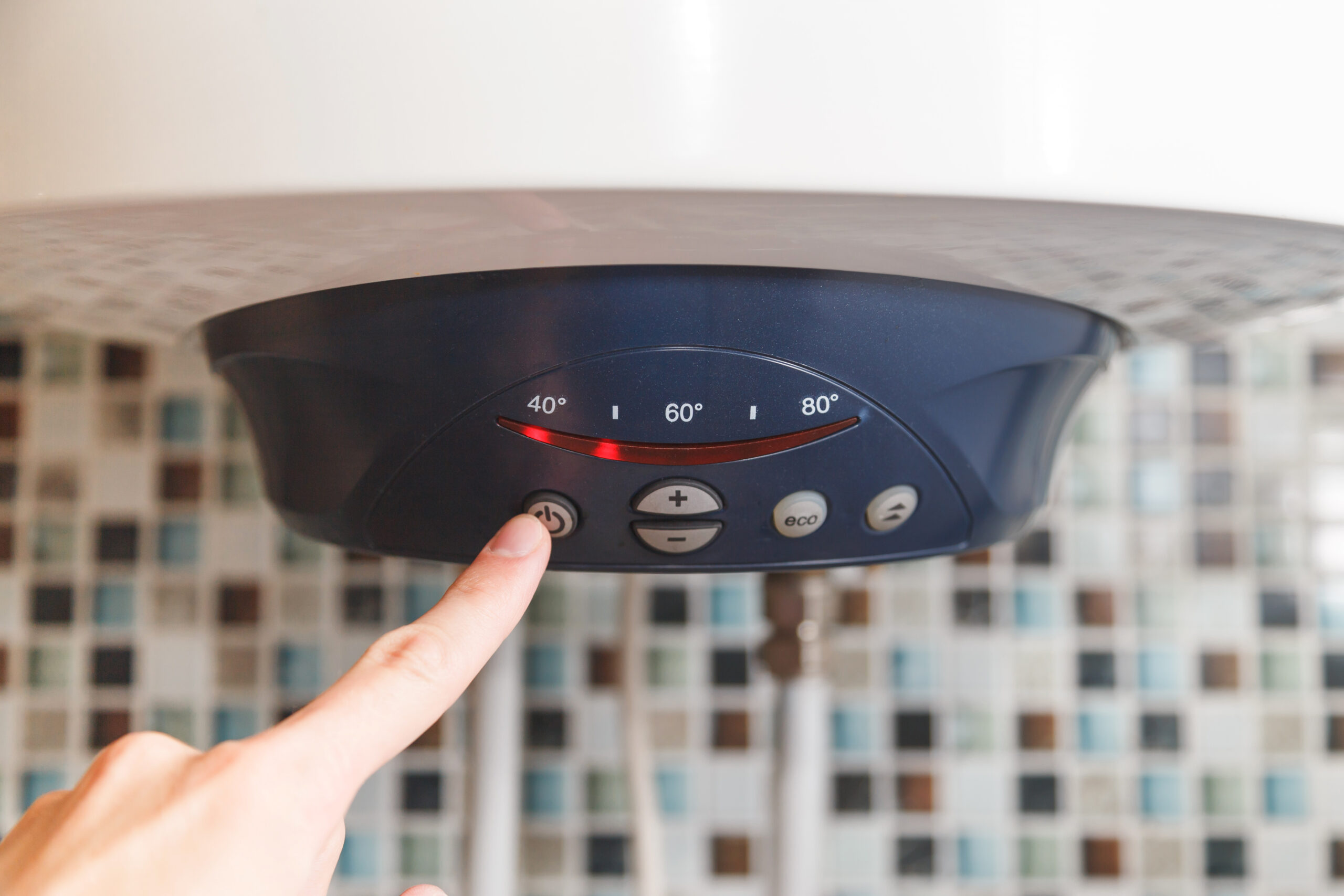A sudden cold shower is a universally unwelcome surprise. It’s often the first sign that your water heater, the unsung hero of your home, is in trouble. While these appliances work tirelessly behind the scenes, they require regular attention to operate efficiently and avoid unexpected failures. Setting up consistent water heater maintenance reminders is the single best way to ensure you have reliable hot water, save money on energy bills, and extend the life of your unit.
Forgetting routine tasks is easy in our busy lives. That’s where a system of reminders becomes invaluable. Whether it’s a simple calendar alert or a sophisticated smart home app, timely prompts can prevent small issues from turning into costly emergencies. This guide will walk you through the essential maintenance tasks, explain how smart technology can help, and show you how to keep your hot water flowing for years to come.
Why Regular Water Heater Maintenance Matters
Your water heater is one of the most expensive appliances in your home to run, accounting for a significant portion of your monthly energy bill. Neglecting it doesn’t just risk a breakdown; it costs you money every single day. Sediment buildup, worn-out parts, and improper pressure levels force the unit to work harder, consuming more energy to heat the same amount of water.
A well-maintained system, on the other hand, operates at peak efficiency. Regular check-ups help identify potential problems early, reducing the likelihood of leaks, water damage, and the need for a premature replacement. By creating a simple schedule, you can protect your investment and ensure your home’s comfort.
The Problem with Sediment Buildup
The most common issue affecting traditional tank water heaters is sediment accumulation. Minerals like calcium and magnesium, naturally present in your water supply, settle at the bottom of the tank over time. This layer of mineral sludge creates a barrier between the heating element and the water.
The consequences are significant:
- Reduced Efficiency: The heater must work longer and harder to heat the water through the sediment layer, wasting energy.
- Corrosion and Leaks: The sediment can corrode the bottom of the tank, eventually leading to leaks.
- Strange Noises: Popping or rumbling sounds are often a sign that water is trapped under the sediment and boiling, a clear indicator that a flush is overdue.
Regularly flushing the tank is a critical part of your maintenance routine.
Your Essential Water Heater Maintenance Checklist
To keep your system in top shape, it’s important to follow a consistent schedule. Setting up water heater maintenance reminders for these key tasks will make the process automatic and stress-free.
1. Flush the Tank Annually
How often should I flush my water heater?
For most homes, flushing the tank once a year is sufficient. However, if you live in an area with particularly hard water (high mineral content), you may need to do it every six months. Flushing removes the sediment that builds up inside, which improves efficiency and prevents corrosion. This simple task is one of the most effective ways to prolong your heater’s life.
2. Test the Temperature and Pressure Relief (T&P) Valve
The T&P valve is a crucial safety feature that automatically releases pressure if it gets too high inside the tank, preventing a potential explosion. To test it:
- Place a bucket under the discharge pipe to catch water.
- Lift the valve’s lever briefly. You should hear a rush of air or see some water discharge.
- Let the lever snap back into place.
If the valve doesn’t release water or continues to drip after the test, it needs to be replaced immediately by a professional. This test should be performed every six months.
3. Check the Anode Rod
The anode rod is a metal rod that hangs inside your tank, attracting corrosive elements in the water. It essentially sacrifices itself to protect the tank’s inner lining from rust. You should check the anode rod every one to three years. If it’s less than half an inch thick or coated in calcium, it’s time for a replacement. A fresh anode rod is a cheap and easy way to add years to your water heater’s lifespan.
4. Adjust the Thermostat for Savings
Many water heaters are set to 140°F (60°C) by default, but the Department of Energy recommends a setting of 120°F (49°C) for most households. This lower temperature is sufficient for all your hot water needs, reduces the risk of scalding, and can save you up to 10% on your water heating costs. This is one of the easiest hot water system tips to implement for immediate savings.
The Smart Solution: Automated Maintenance with Clever Home Assistant
Remembering to perform all these tasks can be a challenge. This is where smart home technology can transform your approach to home maintenance. Using an app like Clever Home Assistant allows you to create and schedule custom alerts for every aspect of your home, including your water heater.
Imagine getting a notification on your phone: “Time for your annual water heater flush!” You can set up recurring reminders for flushing the tank, testing the T&P valve, and scheduling an anode rod inspection. By automating your water heater maintenance reminders, you eliminate guesswork and ensure nothing gets missed. The app becomes your digital assistant, keeping track of your home’s health so you don’t have to. For those with advanced systems, pairing smart leak detectors with your app can provide real-time alerts if a problem arises, potentially saving you from thousands of dollars in water damage.
Signs Your Water Heater Needs Replacing
Even with perfect maintenance, no water heater lasts forever. A traditional tank-style heater typically lasts 8-12 years, while a tankless unit can last 20 years or more. Here are the key warning signs that it might be time for a replacement:
- Age: If your heater is over a decade old, it’s living on borrowed time.
- Rusty Water: Discolored or rusty hot water often indicates that the inside of your tank is corroding.
- Rumbling Noises: As mentioned earlier, loud popping or rumbling can signal a severe sediment problem that may be beyond repair.
- Leaks: Any water pooling around the base of the unit is a red flag. While some leaks can be fixed, a leak from the tank itself almost always means a replacement is necessary.
When it’s time to replace your unit, consider upgrading to one of the modern energy saving water heaters on the market. High-efficiency tank, hybrid, and tankless models can significantly reduce your long-term energy consumption.
What About Tankless Water Heaters?
Tankless water heaters, or on-demand heaters, provide hot water instantly without using a storage tank. While they have a longer lifespan and are more energy-efficient, they still require maintenance. An annual tankless water heater service performed by a professional is recommended. This service involves cleaning the air and water filters and descaling the unit to remove mineral buildup, ensuring it continues to operate efficiently.
Do smart reminders help reduce breakdowns?
Absolutely. The vast majority of water heater failures are caused by a lack of basic maintenance. A corroded anode rod leads to a rusty tank. A clogged T&P valve creates a safety hazard. Heavy sediment buildup causes overheating and component failure. Smart reminders, like those you can set in the Clever Home Assistant app, ensure these preventative tasks are completed on schedule, directly reducing the risk of unexpected breakdowns and costly repairs.
Frequently Asked Questions
- How often should I flush my water heater? Once a year is recommended for most homes to prevent sediment buildup.
- Do smart reminders help reduce breakdowns? Yes, timely reminders dramatically lower the risk of unexpected water heater failures.
- What are signs my water heater needs replacing? Watch for old age, rusty water, strange noises, or leaks around the unit.
Conclusion: Take Control of Your Hot Water System
Your water heater is too important and too expensive to ignore. By being proactive and establishing a regular maintenance routine, you can ensure it runs safely and efficiently for its full expected lifespan. Using a tool like the Clever Home Assistant app to manage your maintenance schedule simplifies the process, providing timely alerts that keep you on track.
Don’t wait for a cold shower to remind you that your water heater needs attention. Set up your maintenance reminders today to enjoy reliable hot water, lower energy bills, and the peace of mind that comes with a well-maintained home.





